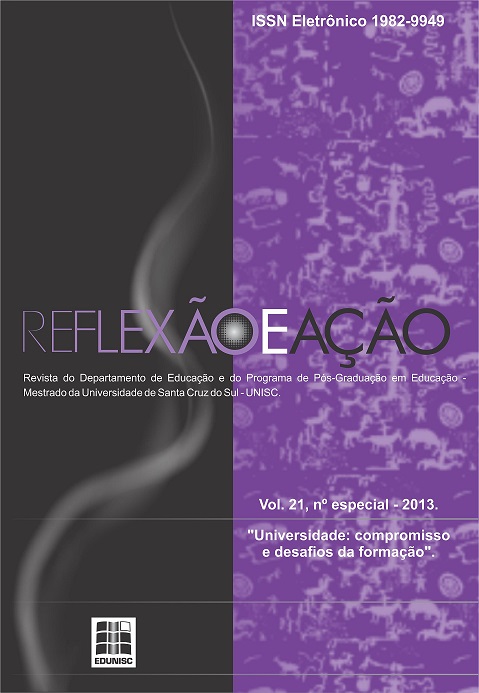PROFILE OF UNDERGRADUATE STUDENTS AT A DISTANCE AND ASPECTS THAT CONTRIBUTE TO LEARNIN
DOI:
https://doi.org/10.17058/rea.v21i2.2847Keywords:
Profile of Students in Distance Education, Distance Education, Learning, Digital Technologies, Social PresenceAbstract
This study aimed to map the profile and some characteristics of students in undergraduate courses to become teacher offered in distance education model, featuring personal aspects, educational and infrastructure that may affect the process of teaching and learning, to provide greater benefits to the proposition of distance education pedagogical projects to training teachers and guide the study on the profile of students in distance education. For this purpose, in the poles of classroom teaching supported by tutors of the course, a online questionnaire was applied in a sample selected for convenience. It was considered 245 finished questionnaires and the data showed that students have an average age of 31.4 years, 55.5% are married, have children 46.1% and 93.5% of students has some kind of professional activitie concurrently with studies. With regard to study habits, 81.2% of students attend once or twice per week the pole's classroom, 62.5% indicated not having time to study, and the printed material is the didactic aspect of the course that most contributes to student learning, followed by the meeting with the teacher in the classroom and then, instructional videos. It is remarkable in the proccess of teaching and learning on distance education, the knowledge acquired and the importance of social presence.Downloads
Downloads
Published
How to Cite
Issue
Section
License
The submission of originals to this journal implies on the transference, by the author(s), of the printed and digital publishing rights. The author´s rights to the published articles are the author´s, the journal has the rights over the first publication. The author(s) can only use the same results in other publications, indicating clearly that this journal was the original publisher. Since we are an open access journal, the free use of articles is permitted for educational and scientific applications, as long as they inform the source according with the CC-BY license from Creative Commons.


